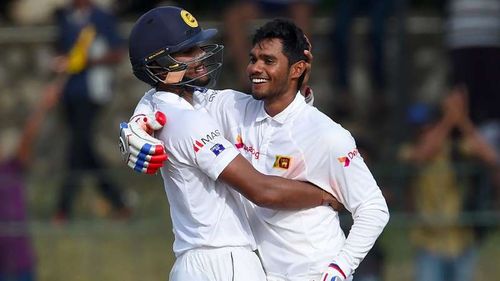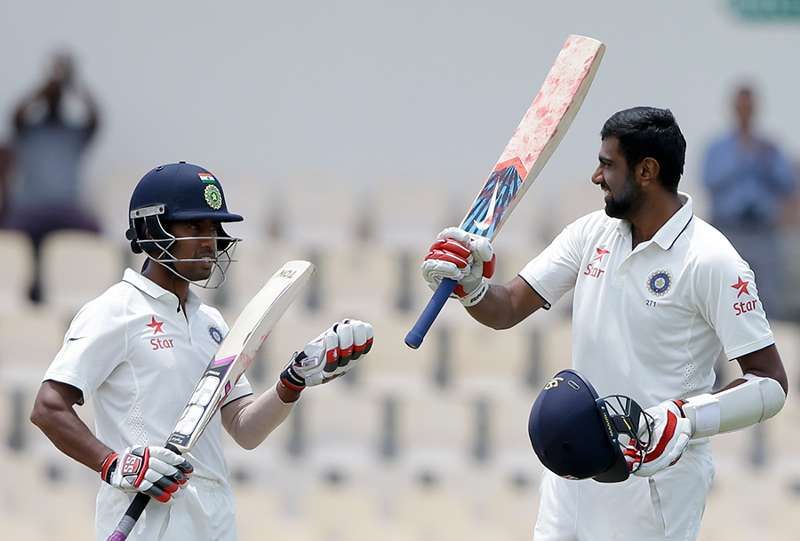
Test Match revivals at No. 6 and 7, and the apparent value of these contributions

Recent victories in Test matches around the world have seen match winning fightbacks from the lower middle order. But do cricket stats really do justice to the quality and character of these innings?
In the recently concluded 3rd Test at the SSC Colombo, Sri Lanka batted first on a great surface for cricket. The batting, however, wasn’t as optimistic, as they were beaten by the speed and movement from Mitchell Starc, who picked up three quick wickets, to send the home team reeling at 26/5.
Similar performances were seen from either sides the entire series:
The first Test match saw Sri Lanka being bowled out for 117 in the first innings. Australia could only manage a 90 run lead, to be blown away by probably, the greatest Test fightback by a Sri Lankan, as Kusal Mendis announced himself in international cricket with a match winning 176. Australia, just having received the Test Mace in spite of losing all its previous 8 tests in the subcontinent, worsened their record.
Also read: Why was Dhananjaya de Silva ruled "not-out" despite a hit-wicket
In the third test, with Sri Lanka at 26/5, it was an obvious expectation for the Australians to come out and bat on Day 1 itself until intuitions were proven wrong by two defiant lower-order batsman at No.6 and 7. Dinesh Chandimal had grown in stature since his gruelling century against England, but Dhananjaya Silva was only settling into the team.
Silva and Chandimal played out 90 overs between them to force a counter attack. They were patient and fearless in the face of the situation but were determined to stretch the innings for as long as they could. Silva fell for a massive 129, and an innings that was invaluable in the context of the game, and the history of SL-AUS contests. Their partnership, a massive 211, set their team up in a dominant position, and Chandimal took the effort forward by sustaining the tail, and stretching the total to 355. He finished with 132. In contrast, the scores of the top order read: 0, 7, 16, 1, 1.
Sri Lanka would go on to win the game by an unimaginable 163 runs, with a 2nd innings spin-wreck orchestrated by Rangana Herath.
Ashwin and Saha do their bit in the West Indies

On another end of the timezone Ravichandran Ashwin and Wriddhiman Saha both became the first Indians to score centuries at No. 6 and 7 respectively, having joined when India were 126/5. One cannot be oblivious of the fact that the West Indies’ pace attack was far less intimidating than Starc and Co., but the resulting situations, have led to India becoming No.1, and Australia moving down to No.3 in the rankings.
This was to be Ashwin’s fourth century against the West Indians, and Saha’s maiden ton, as they seemed unaware of the situation, and stayed determined and patient and got India across the 300 mark: two innings which revived the match for India as much as winning it.
This brings us to study these innings at a deeper level than merely observing the scores and deficits. What were the psychological struggles the players went through to fight out the innings? How does the mental strength of a player complement his cricketing ability? Sri Lanka and India had already closed down on the series—would it have been tougher had it been a Test match to save on Day 5?
The psychology when coming out to bat later
Psychologically, losing 5 wickets on the morning of Day 1 is a heavy burden too, as the defined role of the lower order is often to capitalise on the starts and progress built by the top order. On a role basis, the middle order of No.3 and 4 hold the responsibility of patiently seeing out the crunch overs in the case of an early dismissal, in an attempt to settle in the state of play.
The efforts and consequent centuries of Ashwin, Saha, Silva and Chandimal command much more value and appreciation for the circumstances in which they were scored, not just for the fact that they countered a psychological disadvantage, but also instrumented a momentum shift, that resulted in the opposition handing the match away.
Also read: Twitter reacts as India goes top in Test Rankings
Food for thought: A 150 by an opener on a flat surface cannot mean the same as a 150 by No.5 on a turning track, with 5 wickets down, and a tougher opposition. We can often observe in the game of cricket how certain performances, though similar in numbers, are more significant than others.
This makes us think—do the numbers do justice to these efforts? Is there any way of judging cricket performances in terms of importance and situational value? Factors like pitch conditions, opposition, situation all need to be taken into account to really judge how good a performance has been.
Traditional cricket stats, however, do not tell us these stories. These are the stories that reveal the beauty of Test match cricket. And such are the circumstances that get the best out of a player, and define the character and resolve that really differentiates a great innings from a good one.
A bright spark for Sri Lankan cricket
Soon after the England tour, there was disappointment across cricketing circles, and several articles highlighting the fall of Sri Lankan cricket, but this series has brightened the Test arena more than ever.
This series has shown that young sides, with players like Kusal Mendis and Dhanjanya Silva, can display character in the most challenging circumstances, and break records and mental blocks against the toughest of oppositions.
Additionally, this series has also exposed many of Australia’s weaknesses, especially against turning pitches and in finding the virtue of patience, due to which their might in international cricket has gone far from being as dominant as it once was.